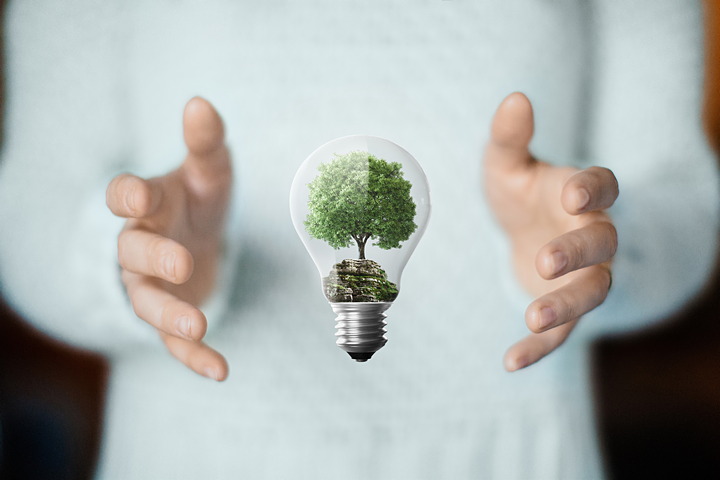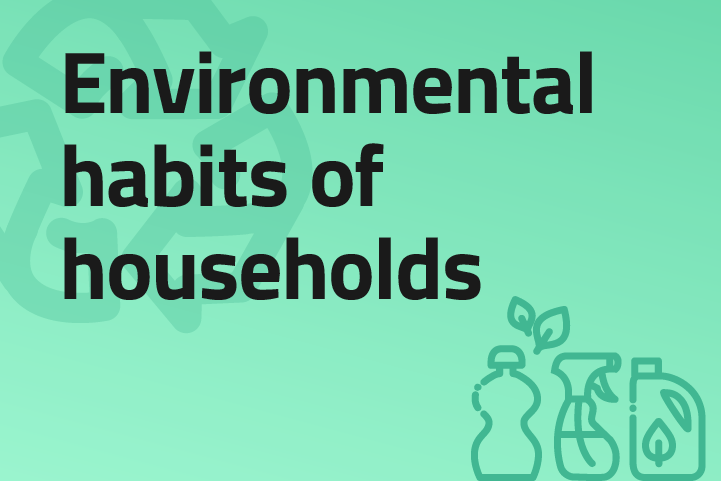Environment, public utilities
Environmental statistics covers data on natural resources (e.g. mineral resources, water resources), the load of the environment (e.g. air pollution, sewage treatment, waste management), environmental quality (quality of e.g. air, water or soil), nature protection (e.g. protected areas, protected species) and environmental protection (e.g. environmental investments, environmental expenditures, environmental taxes). It shows the state and the load of the environment, and quantifies efforts against the load of the environment. Public utilities statistics covers statistical data on public utilities (electricity, gas, purchased heat, drinking water, sewage, waste) in settlements.
Key figures
Emissions of carbon dioxide
Indicator description
Emissions of carbon dioxide in a particular year (excluding carbon dioxide from biomass).
Source of data:
Summary Tables (STADAT)
Last data for period: 2022
Emissions of suspended dust with a diameter of less than 2.5 µm
Indicator description
Emissions of particulate matter with a diameter of less than 2.5 µm by anthropogenic (industrial, transport, agricultural and public utilities) sources.
Source of data:
Summary Tables (STADAT)
Last data for period: 2022
Annual water consumption per capita
Indicator description
The indicator shows the quantity of annual water consumption in cubic metres per inhabitant. Drinking and household water needs of the population can be satisfied and the supply of water of drinking water quality to enterprises, public institutions and smaller industrial plants can be ensured by own water works of plants or institutions, from private or common wells and from public water conduits.
Source of data:
Summary Tables (STADAT)
Last data for period: 2023
Proportion of forests that are healthy in terms of defoliation
Indicator description
Area of forests with a foliage density considered as ideal in a particular habitat, as a proportion of total forest area.
Source of data:
Summary Tables (STADAT)
Last data for period: 2023
Featured
Snapshots, 2023 – Climate indicators in Hungary
The publication presents and quantifies climate change-related processes in Hungary based on a set of indicators that are consistent with domestic policies and international standards. Increasingly frequent extreme weather events, such as heat waves and supercells, affect energy use and damage wildlife, agricultural crops and infrastructure. Climate change threatens people's health and has a negative impact on the economic cycle.
No white Christmas in Budapest since 2002
In Christian culture, Christmas is the most magical and eagerly awaited holiday of the year, when joy and peace create an intimate atmosphere in every home. Families gather to spend this special time together, giving each other gifts of thoughtfulness and love. The snow-covered streets and rooftops, the glow of candles and the moments shared together make this a holiday to remember forever, a holiday that is not only about gifts, but also about love, togetherness and the value of time spent together.
3 November 2024, the Feast Day of St Hubert, the patron saint of hunters
In 2023, in addition to a record number of 68 thousand sport hunters, nearly 3 thousand professional hunters performed tasks of wildlife management and wildlife protection management in Hungary. Out of the 50 best antlered deer trophies in Hungary so far, 20 were taken in Zala County, 11 in Somogy County, and 15-15 of the best fallow deer trophies were taken in Hajdú-Bihar and Tolna Counties. The revenues of hunting companies from shooting for hire and the provision of related services increased to a peak value of HUF 18.2 billion in 2023.
Statistical Yearbook of Hungary, 2023
The yearbook provides an overview of Hungary's demographic, social and economic processes, environmental characteristics and their changes over time, with the help of tens of thousands of data of 500 tables, graphs and maps. Innovatively, the Tourism, catering chapter in the volume includes the gross receipts of tourist accommodation establishments by type of accommodation. Another change is that this year the Regional data chapter already presents territorial data by tourism area, giving greater emphasis to tourist destinations.
Snapshots, 2023 – Green economy
A green economy, as a model of organising and developing the economy, aims to reduce environmental risks and to compensate for the scarcity of available natural resources, as one of the priorities aims to increase energy efficiency. According to energy performance certificates issued in 2022 for new and used residential real estate, buildings with the highest energy efficiency were in Győr-Moson-Sopron and Pest Counties as well as Budapest, while the least energy efficient ones in Nógrád, Békés and Jász-Nagykun-Szolnok Counties.
Settlement related data regarding 2021 are presented here
Datasets from the Dissemination Database regarding settlements have been updated with 2021 data, as such settlement related data for 2021 are available since 13 December, concerning, among others, public water and sewerage.
Indicators of sustainable development for Hungary, 2018
In 1992, the United Nations Conference on Environment and Development was held in Rio de Janeiro, and gave the impetus to the integration of the concept of sustainable development into national and global policies. In Hungary, the National Sustainable Development Council (NFFT, established in 2007) developed the Hungarian National Sustainable Development Framework Strategy, which was adopted by the Parliament in 2013. The framework strategy aims to provide a nationwide, long-term guide for individual and community action. Compared to the strategy of the European Union or the UN SDGs, the Hungarian framework strategy interprets the concept of sustainability much more narrowly. In this interpretation, sustainable development policy is primarily a long-term resource management activity in which it distinguishes four resources: human, social, natural and economic resources.
Related themes
Methodological information
Publications |
Released |
|---|---|
| Hungary 1st-3rd quarters of 2024 | 09/01/2025 |
| Regional Statistical Yearbook of Hungary, 2023 | 27/11/2024 |
| Hungary, 1st semester of 2024 | 14/10/2024 |
| Statistical Yearbook of Hungary, 2023 | 29/08/2024 |
| Hungary, 2024 Q1 | 26/08/2024 |
| Hungary, 2023 | 27/06/2024 |
| Statistical Pocketbook of Hungary, 2023 | 27/05/2024 |
| Hungary, quarters 1-3 of 2023 – On the path of disinflation | 10/01/2024 |
| Regional Statistical Yearbook of Hungary, 2022 | 17/01/2024 |
| Hungary, 1st semester of 2023 – disinflation started | 19/10/2023 |
| Statistical Yearbook of Hungary, 2022 | 23/11/2023 |
| Hungary, 2023 Q1 | 30/08/2023 |
| Statistical Pocketbook of Hungary, 2022 | 14/06/2023 |
| Hungary, 2022 | 28/06/2023 |
| Hungary in figures, 2022 | 11/07/2023 |
| Hungary, Quarter 3 2022 | 06/02/2023 |
| Regional Statistical Yearbook of Hungary, 2021 | 10/01/2023 |





















